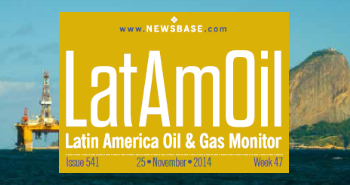ONP pipeline flows halted by indigenous protest
A group of indigenous Peruvians took over the facilities of Pump Station #5 along the Northern Oil Pipeline (ONP) last week, in an act that forced the national oil company (NOC) Petroperu, the owner of ONP, to halt crude shipments.
In a statement, Petroperu said it had taken this step after residents of the northern Loreto region seized control of the pumping station on October 4. It reported that about 200 people had participated in the protest and complained that the demonstrators had been “irresponsibly installing tents and other items without taking security conditions into account.”
As of press time, it was not clear whether ONP had come back on stream. A local advocacy group, the Indigenous Association for Development and Conservation of Bajo Yurimaguas (AIDCBY), declared a strike on October 6 and said it was ready to continue blocking oil shipments until Peru’s President Pedro Castillo met their demands and redistributed the proceeds of natural resource development projects.
“Not a single drop of oil is going to come out of the Amazon until the government takes care of us,” AIDCBY proclaimed in a statement.
This is not the first time that indigenous groups in Peru’s upper Amazon basin have staged protests to demand better economic and social support. In late September of 2020, for example, a group of about 200 activists blocked the entrance of the same facility, Pump Station #5. They did so not long after protesters took control of the station, which is near the Bretaña oilfield within Block 95.
Bretaña is the flagship asset of PetroTal, which is based in Canada. Last year’s protests spread into the company’s work camp and resulted in the deaths of several protesters. They also caused the field to remain offline for 85 days, thereby derailing efforts to bring yields back up to pre-pandemic levels.
PetroTal and other upstream operators use ONP to pump their crude from northern Peru to Petroperu’s Iquitos refinery on the Pacific coast. Late last year, though, the Canadian company said it had succeeded in opening up a new oil export route via Brazil. The new route uses barges to move crude down the Amazon river to the Brazilian port of Manaus. (It is still not as heavily used as ONP, presumably because it enjoys less economy of scale.)
For decades, there has been friction between oil companies and Peruvian indigenous groups. The country’s judiciary has requested a ban on oil exploration and exploitation in an indigenous region of the Amazon, in an area where local tribes have long opposed the development of energy projects on their land.


Follow us online